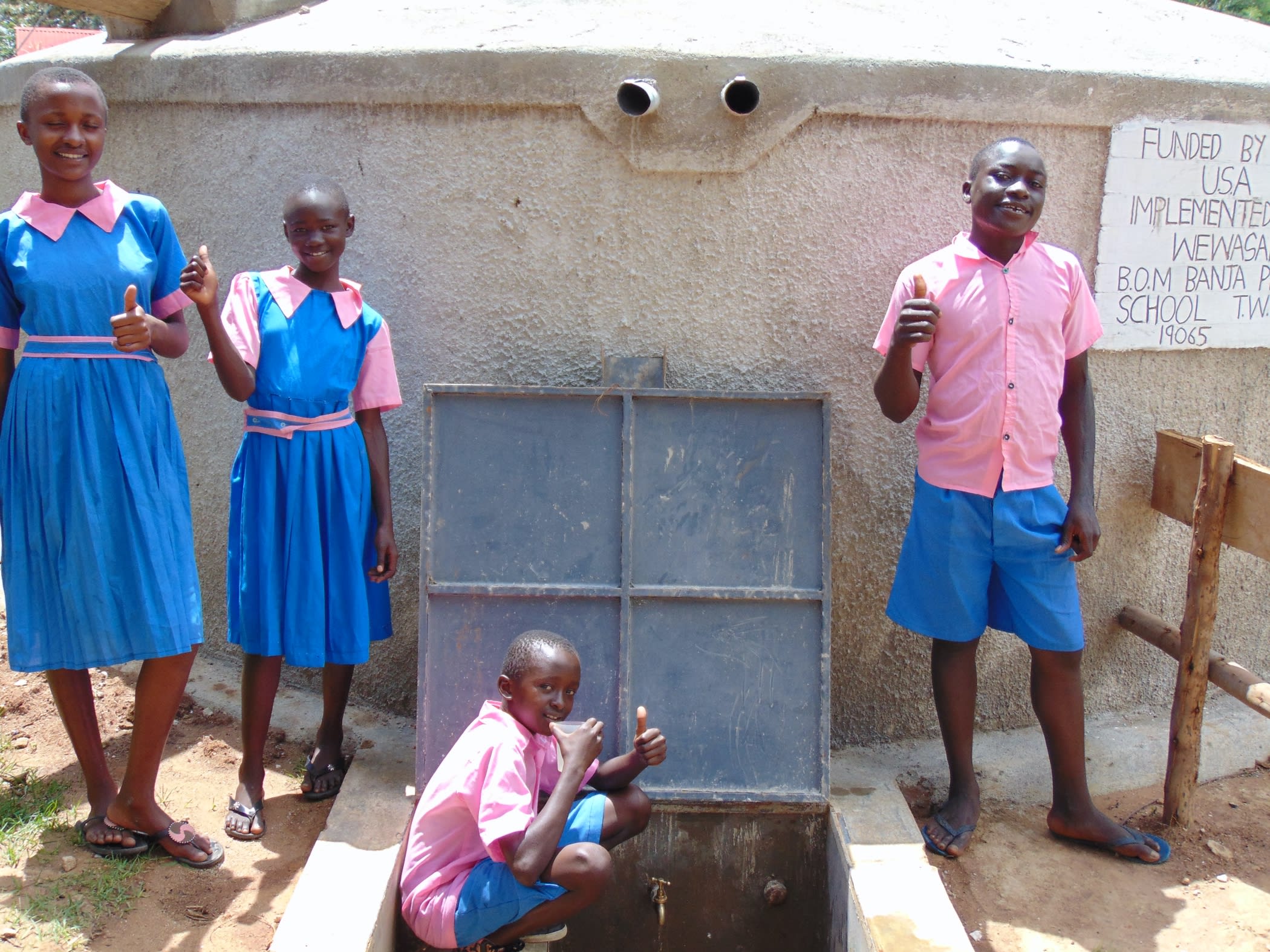Banja Primary School started in 1954 but has grown at a snail's pace because of high poverty in the surrounding communities. There are currently 256 students enrolled taught by 14 teachers and staff.
Students report to school by 7:00 am, do cleaning chores, then start normal lessons at 8:00 am that last until lunch. Students are sent back home to get food and return for afternoon classes. In between the lessons, short breaks are included in the timetables for the students to go to the latrines and to fetch water from Katigara Spring.
Students have to walk to Katigara Spring between classes because there is n0t enough water on school grounds. There is just a small tank of 2,300 liters that is insufficient to support the water requirements of the school. Students' hygiene is in jeopardy because they lack water to wash their hands after using the latrines.
"Our poor hygiene can cause dangerous diseases that could even lead to death. Students do not understand the importance of practicing good sanitation and hygiene and when we try to tell them, they still do nothing as they believe they do not have the power to change anything, especially with their limited facilities," said school board chair Mr. Kihima.
Katigara Spring is a long walk from the school, making it an exhausting chore for students - especially on the way back as they carry a heavy container of water. Spring water is just kept in the students' containers because there is not enough storage on school grounds. Some students drink directly from their containers while others use small cups. Teachers prefer to either bring their own water in the morning or get it from the plastic tank.
The administration is wary of the water students fetch from the spring because their containers are dirty and there is a high chance of contamination as they make the long walk back to school.
"We suffer in this school because of using dirty water. Diseases spread through water have robbed us of our money every now and again and that challenge can be solved with the availability of clean water," said Teacher Ngereso.
The school is facing challenges beyond water. There is a single mixed-gender latrine for all 14 staff members. Preschool children share latrines with the primary school learners, too. There are 3 for each gender.
This is an institution close to the border of Vihiga County and Nandi County, therefore it has a mixture of students from different people groups. Board chairman Mr. Kihima believes that if this school can get a large rainwater tank and 6 latrines, so many problems students face, like diarrhea, will end.
What we can do:
Rain Tank
A 50,000-liter rainwater catchment tank will help alleviate the water crisis at this school. The school will help collect the needed construction materials such as sand, bricks, rocks, and water for mixing cement. We will complement their materials by providing an expert team of artisans, tools, hardware, and the guttering system. Once finished, this tank will begin catching rainfall that will be used by the school’s students and staff for drinking, handwashing, cooking, cleaning, and much more.
We and the school strongly believe that all of these components will work together to improve standards at this school, which will help lead to better student academic performance and will help unlock the opportunity for these students to live better, healthier lives.
Handwashing Stations
There is currently nowhere for students to wash their hands after using the latrines or before eating lunch, let alone the water to do so.
The student health club will oversee the 2 new handwashing stations we will provide, and make sure they are kept clean and in working condition. The club leaders will fill the handwashing stations with water daily and make sure they are always supplied with a cleaning agent such as soap or ash.
VIP Latrines
2 triple-door latrine blocks will be constructed with local materials that the school will help gather. 3 doors will serve the girls while the other 3 will serve the boys. All of these new latrines will have cement floors that are designed to be easy to use and to clean. And with a rain tank right on school property, there should be enough water to keep them clean.
Training
We will hold a 1-day intensive training on improved hygiene, health, and sanitation habits at this school. Our team of facilitators will use a variety of methods to train students and staff, including participatory hygiene and sanitation transformation (PHAST) and asset-based community development (ABCD). We will initiate a child-to-child (CTC) student health club, which will prepare students to lead other pupils into healthy habits at school and at home. We will also lead lectures, group discussions, and provide illustrative handouts to teach health topics and ways to promote good hygiene practices within the school. We will then conduct a series of follow-up trainings before transitioning to our regularly scheduled support visits throughout the year.

 Rainwater Catchment
Rainwater Catchment
 Rehabilitation Project
Rehabilitation Project
































